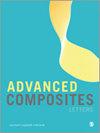纤维结构对玻璃纤维增强复合材料冲击后残余强度的影响
IF 2.1
4区 材料科学
Q3 MATERIALS SCIENCE, COMPOSITES
引用次数: 1
摘要
玻璃纤维增强聚合物(GFRP)复合材料在汽车和船舶工业中有着广泛的应用。然而,复合材料在生产或使用过程中不可避免地会受到冲击损伤,因此有必要对冲击后的性能退化进行评估。纤维预制体的结构对玻璃钢的冲击损伤性能有显著影响。本文主要研究了预制体结构对复合材料损伤演化和残余承载能力的影响。分别研究了GFRP平铺预制体结构和交叉铺预制体结构的微观结构和冲击后的残余强度。低速冲击主要导致基体开裂和分层,而GFRP纤维破坏不明显。在碰撞后,交叉编织复合材料比平纹编织复合材料检测到更多的冲击损伤层。结果表明,平纹编织预制体结构具有较好的屏蔽冲击损伤能力。与具有交叉层预制体结构的GFRP相比,具有平纹编织预制体结构的GFRP在低冲击能下表现出更好的抗冲击能力,但在高冲击能下表现出更低的残余强度。经纬纤维之间的相互作用使得平纹编织复合材料在单股能量中吸收更多的能量,这是平纹编织复合材料在高冲击能量下表现出优异的损伤屏蔽性能,但残余强度较差的原因。本文章由计算机程序翻译,如有差异,请以英文原文为准。
Effect of fiber architecture on the residual strength of laminate glass fiber-reinforced polymer composites after impact
Glass fiber-reinforced polymer (GFRP) composites are widely applied in automotive and shipbuilding industry. However, impact damage is unavoidable to the composites during production or service, and the evaluation of performance degradation after impact is necessary. The architecture of the fiber preform shows significant influence on the impact damage behavior of GFRP. The present work focused on the influence of preform structure on damage evolution and residual load-bearing capability of the composites. The microstructure and the residual strength after the impact of GFRP with plain-weave preform structure and cross-ply preform structure have been investigated, respectively. The low velocity impact primarily caused matrix cracking and delamination, but unobvious fiber failure to GFRP. More impact-damaged plies were detected in cross-ply composites than plain-weave composites after impact. It indicated that plain-weave preform structure owes better impact damage shielding capability. However, the GFRP with plain-weave preform structure exhibited better impact resistant ability under low impact energy but less residual strength under high impact energy, compared with the GFRP with cross-ply preform structure. The interaction between the warp and weft fibers made the plain-weave composites absorbing more energy in a single ply, which was the reason for the plain-weave composites to exhibit excellent damage shielding performance but poor residual strength under high impact energy.
求助全文
通过发布文献求助,成功后即可免费获取论文全文。
去求助
来源期刊

Advanced Composites Letters
工程技术-材料科学:复合
自引率
0.00%
发文量
0
审稿时长
4.2 months
期刊介绍:
Advanced Composites Letters is a peer reviewed, open access journal publishing research which focuses on the field of science and engineering of advanced composite materials or structures.
 求助内容:
求助内容: 应助结果提醒方式:
应助结果提醒方式:


